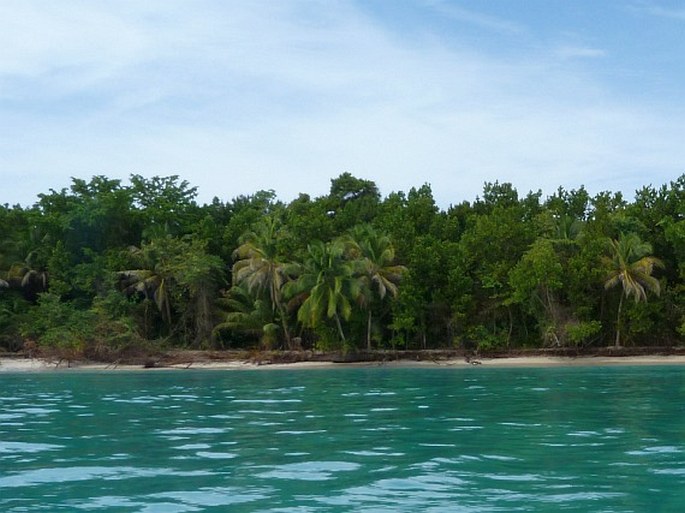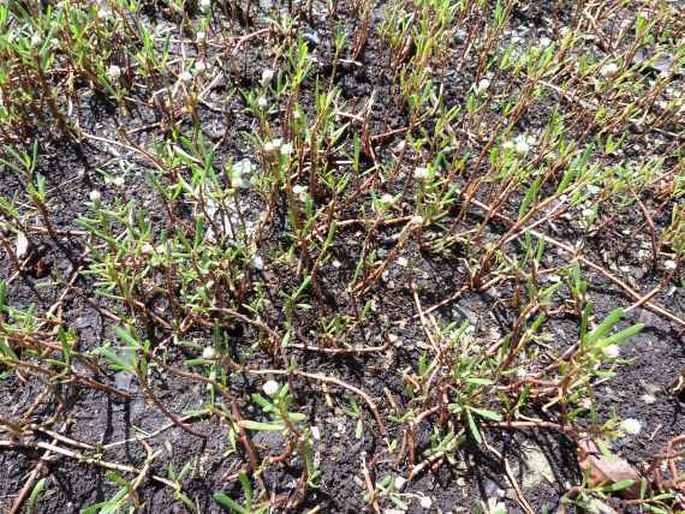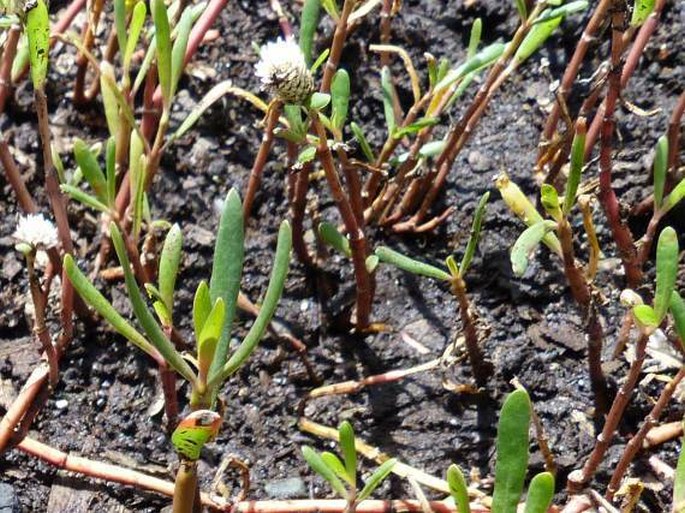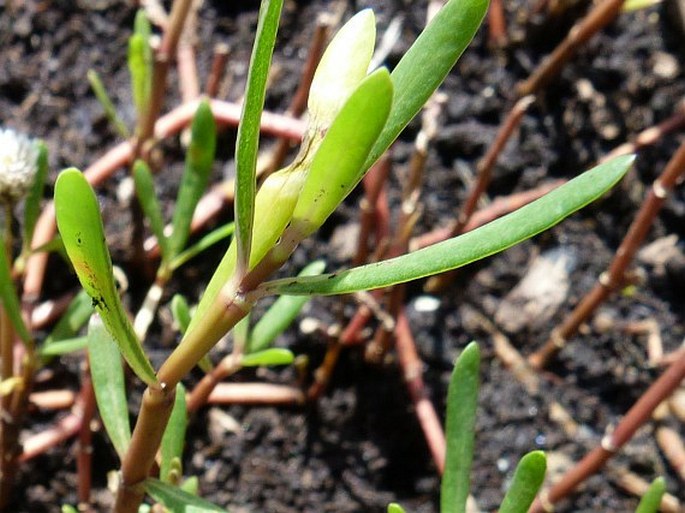Syn.: Achyranthes vermicularis (L.) Eaton, Achyranthes vermicularis (L.) Elliott, Blutaparon breviflorum Raf., Blutaparon brevifolium Raf., nom. illeg., Blutaparon repens Raf., nom. illeg., Caraxeron vermicularis (L.) Raf., Cruzeta crassifolia Maza, Cruzeta vermicularis (L.) M. Gómez, Gomphrena aggregata Willd., Gomphrena vermicularis L., Illecebrum vermiculatum (L.) L., Iresine aggregata (Willd.) Moq., Iresine crassifolia Moq., Iresine vermicularis (L.) Moq., Lithophila vermicularis (L.) Uline, Philoxerus aggregatus (Willd.) Kunth, Philoxerus crassifolius Kunth, Philoxerus vermicularis (L.) Sm.
Family: Amaranthaceae Juss.

Distribution: Western tropical Africa (from Senegal through Guinea and southern Nigeria to western Cameroon, Gabon and western Angola), Central America and northern part of South America (from Florida and southern Texas through Antilles, Belize and Panama to Ecuador, Venezuela, French Guiana and eastern Brazil (Caatinga, Cerrado, Mata Atlântica).
Ecology: It grows in sands of beaches, dunes, on saline soils, from seashore to 10 m asl. It blooms year-round.

Description: Perennial or occasionally annual herb. Stems mostly prostrate with ascending branches, 30–150 cm long, much-branched, glabrous. Leaves opposite, sessile, linear to linear lanceolate or oblanceolate, 15–55 × 2–12 mm. Inflorescences solitary, terminal, heads globose or cylindric, 7–30 × 7–10 mm, white or pinkish, bracteoles slightly shorter than flowers; flowers very short-pedicellate, tepals 5, white, oblong, thickened basally, 3–5 mm, chartaceous, apex of outer tepals obtuse, apex of inner tepals acute, spinose-tipped, densely villose. The fruits are utricles, 1.3 mm long.
Note: The genus contains 4 species which occur in littoral in tropical and subtropical America (including Galápagos Islands), eastern Asia, and western Africa.



These images were taken in Panama, Cayos Zapatilla (by Jindřiška Vančurová, March 8, 2014).


